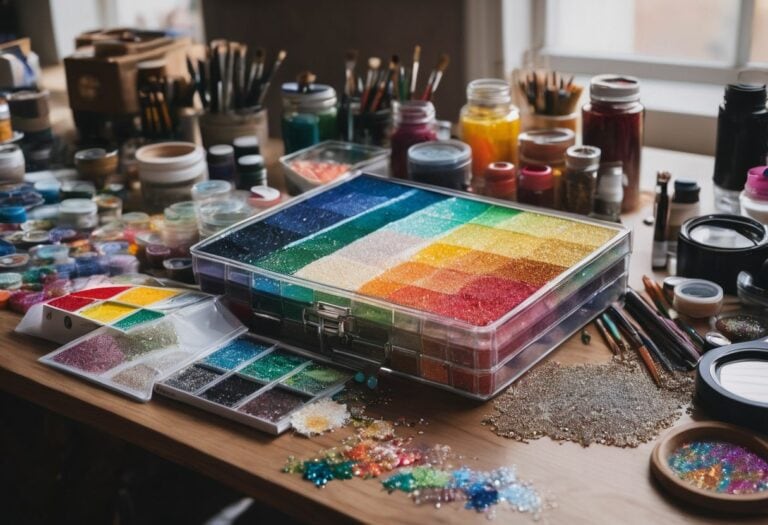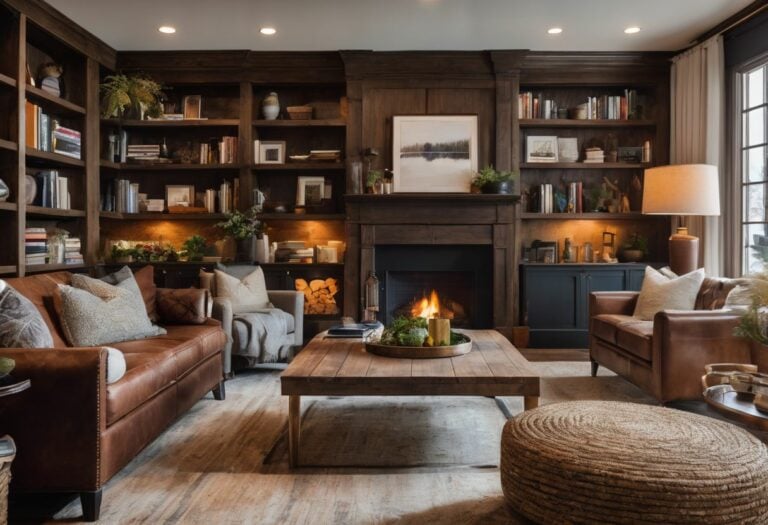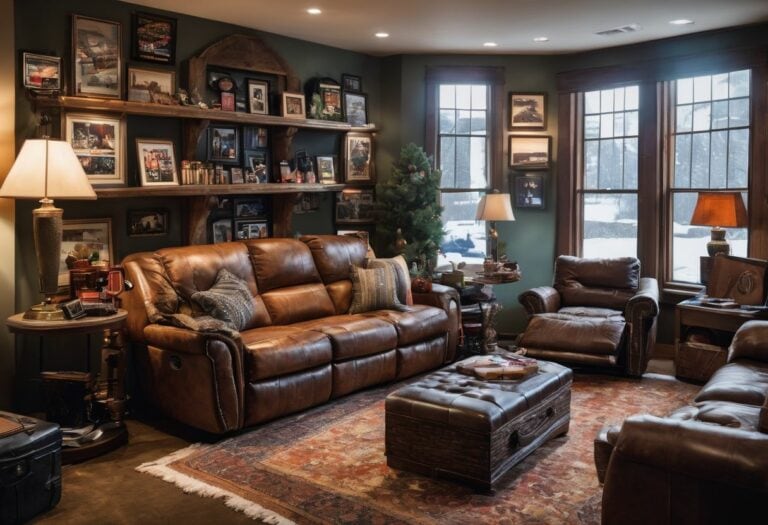Can You Paint Over Old Paint on Metal? A Step by Step Guide
Ever scratched your head, pondering, Can you paint over old paint on metal? Don’t worry, you’re in good company. This is not just a mind-boggler for you but also a frequently asked question by many home-improvement enthusiasts.
In fact, it was this very riddle that sent me down the rabbit hole into the intriguing world of painting over metallic surfaces. Fasten your seat belts because throughout this blog post we’ll venture through the dos and don’ts of repainting metal objects – unraveling how to successfully give your pre-painted metal items an impressive makeover with just a few simple moves.
Buckle up; Your journey towards achieving that sterling finish starts here!
Key Takeaways
- Identify the type of metal you are working with before painting over old paint on metal surfaces.
- Remove any old paint and rust from the metal surface by using wire brushes, sandpaper, or abrasive blasting.
- Clean the metal thoroughly to create a clean and smooth surface for better adhesion of the new paint.
- Sand the metal to remove debris, grease, and rough patches that may prevent proper adhesion of the new paint.
Can You Paint Over Old Paint on Metal: Assessing Painted Metal Items
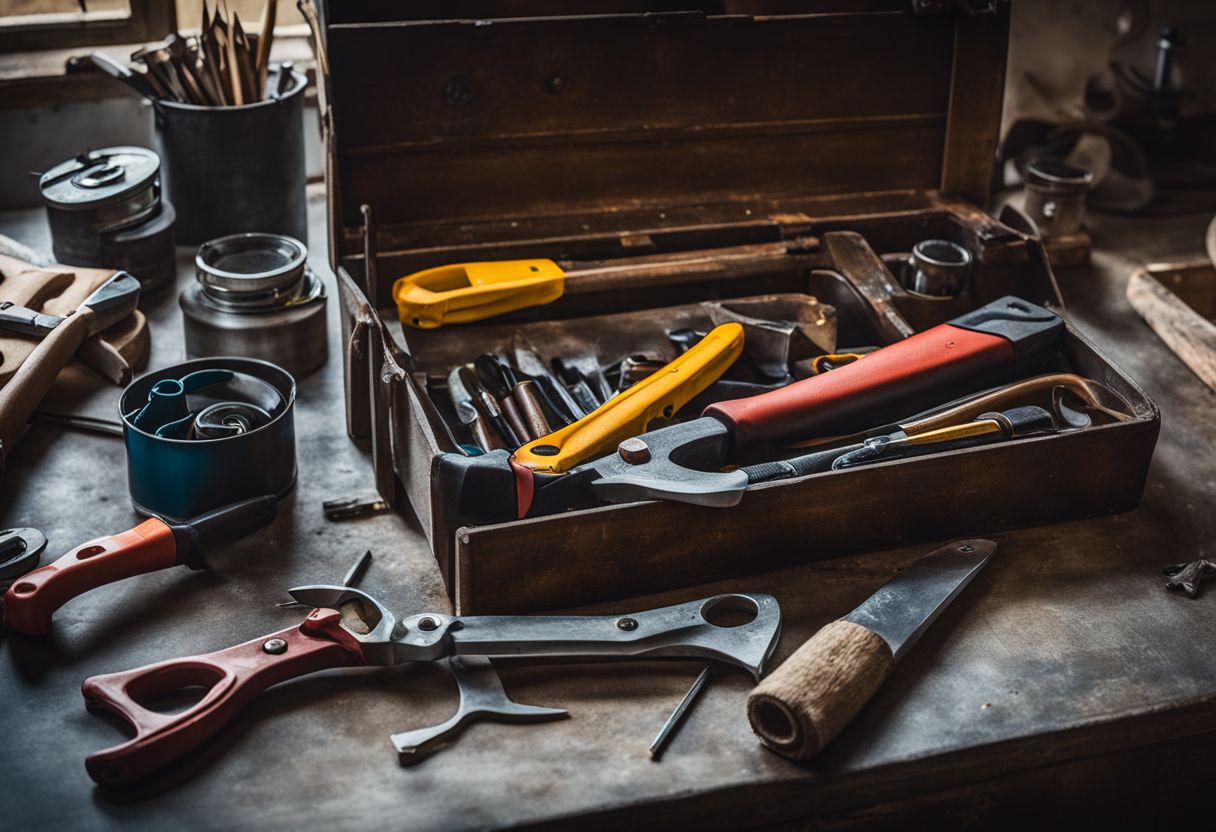
To successfully paint over old paint on metal, it is important to start by assessing the painted metal items. This involves identifying the type of metal, removing any old paint and rust, cleaning and sanding the surface.
Identify the metal type
First off, we must find out what type of metal you have. It could be iron, steel, aluminum or other types. Knowing the kind of metal aids in choosing the right paint and tools for this job.
Different metals react with paints differently. Iron and steel often rust when left untreated but aluminum doesn’t rust at all! So it’s really important to figure out what your item is made from before moving on to the next steps in our guide.
Remove old paint and rust
I always start by removing old paint and rust. Here’s a step-by-step guide on how to do it:
- Use the right tools. It can be wire brushes or sanders. They both work well.
- Begin with loose rust or flaking paint first. You can use a wire brush for this task.
- If a wire brush is not enough, opt for 120 grit sandpaper.
- Use a putty knife or a scraper for stubborn spots.
- Abrasive blasting is the best way to get all the rust off, if available.
- Once you’re done, clean the surface with a damp cloth.
Clean the metal
Cleaning the metal is a key step in painting over previously painted metal. Here are the steps you should take:
- Start by picking up a wire brush. With it, brush any surface rust off the metal.
- Next, remove old paint and imperfections with sandpaper or a scuffing pad. The goal is to create a smooth surface for painting.
- Now, get rid of any organic matter on your item. Grease, oil, or grime can stop the new paint from sticking to the surface.
- If there’s residue from preexisting coatings, wipe this off too.
- After brushing and wiping down your item, wash it using warm soapy water.
- Finally, let the metal dry completely before moving onto the next step.
Sand the metal
To get a good paint job on metal, it’s important to sand the surface first. Sanding helps remove old paint, rust, debris, grease, and dirt so that the new paint can stick properly. Here’s how to do it:
- Use a wire brush or electric drill with a wire brush attachment to remove paint from wrought iron, cast iron, and steel surfaces.
- For the whole metal surface, use fine – grit sandpaper to thoroughly sand it before painting.
- To prepare already painted metal surfaces that are in good condition, lightly sand them with 150 grit sandpaper to remove loose paint, rust, and dirt.
- If the already painted metal surface is in good condition but needs better adhesion for the new paint, rough it up with 240 grit sandpaper.
Preparation for Painting Over Painted Metal
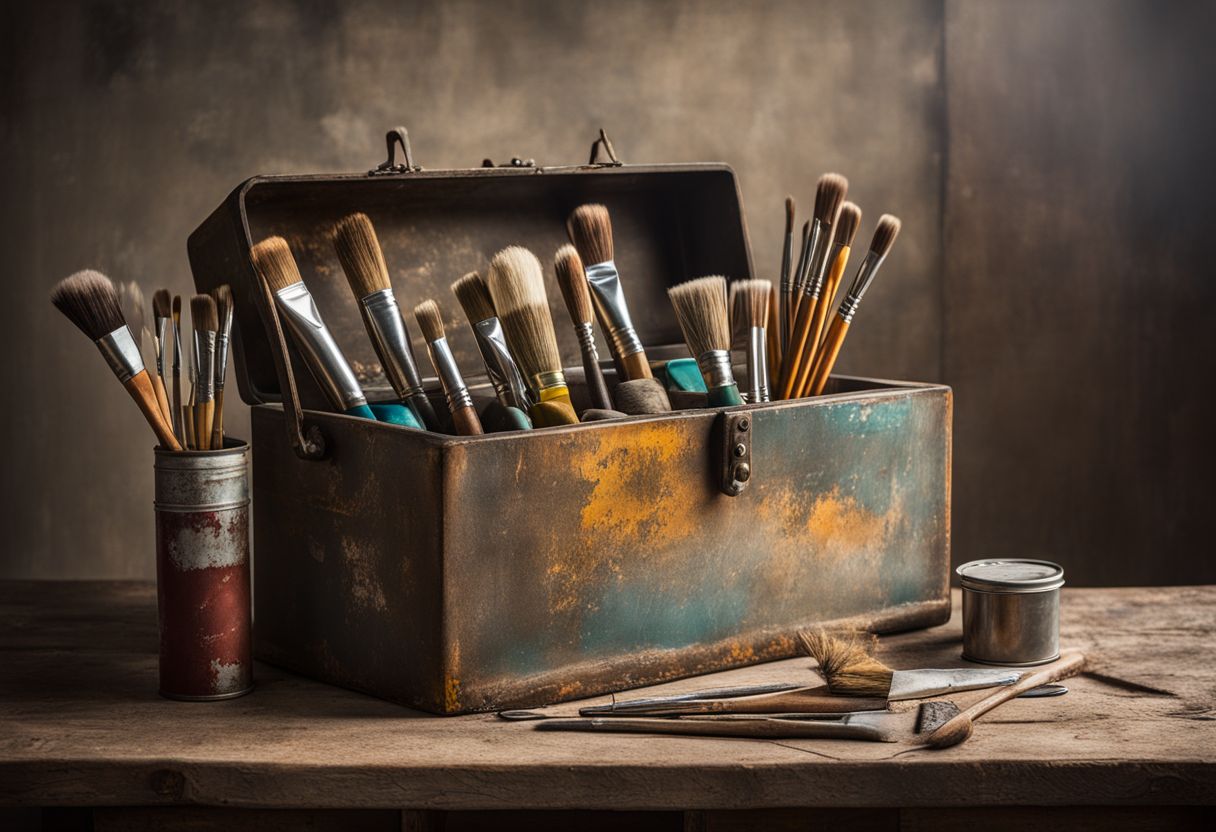
Choosing the right primer is crucial in ensuring a successful paint job on metal surfaces. Learn about safety considerations, necessary equipment/tools, and appropriate materials for prepping your metal items before painting.
Read more to discover the secrets to a long-lasting finish on painted metal surfaces.
Choosing the right primer
When painting over old paint on metal surfaces, it’s important to choose the right primer. An oil-based primer is highly recommended for repainting metal because it helps prevent corrosion and acts as a bonding layer for better adhesion of the paint.
This means that the new paint will stick better to the metal surface and last longer. Remember to check the instructions of your chosen metal paint, as some may require the use of a primer before application.
By selecting the appropriate primer for your specific type of metal, you’ll ensure a successful and durable paint job that stands up well over time.
Safety considerations
Safety should always be a top priority when painting over painted metal. Here are some important safety considerations to keep in mind:
- Proper ventilation: Make sure you are working in a well-ventilated area, as paint fumes can be harmful if inhaled for prolonged periods.
- Personal protective equipment (PPE): Wear appropriate PPE, such as gloves, goggles, and a respirator, to protect yourself from potential health hazards associated with paint chemicals and dust.
- Safe work practices: Follow safe work practices, such as using sturdy ladders or scaffolding when working at heights, and keeping your work area clean and free from tripping hazards.
- Hazardous waste disposal: Dispose of paint cans, brushes, and other materials properly according to local regulations. Avoid pouring leftover paint or solvents down the drain or into the environment.
Necessary equipment/tools
Here are the tools and equipment you’ll need for painting over painted metal:
- Abrasive pad: This is used to remove loose paint and rust from the metal surface.
- Sandpaper: Different grits of sandpaper can be used to smooth out rough patches on the metal.
- Paint scraper: A paint scraper comes in handy for stubborn paint or rust removal.
- Solvent or paint thinner: These can be used to clean the metal surface before painting.
- Surface cleaner or degreaser: This helps remove any grease or dirt from the metal surface.
- Masking tape: Use masking tape to protect areas you don’t want to paint, such as handles or hinges.
- Putty or filler: If there are any dents or imperfections on the metal, putty or filler can be used to fill them in.
- Drop cloth: Lay down a drop cloth to protect surrounding surfaces from drips and spills.
- Paint tray: Pour your desired paint color into a paint tray for easy access while painting.
- Paintbrush comb: After each use, use a brush comb to thoroughly clean your brushes and remove excess paint.
Appropriate materials
To paint over old paint on metal, you will need the following materials:
- Spray paint or paint specifically formulated for use on metal surfaces.
- Rust – inhibiting primer designed for metal.
- Safety equipment like gloves, goggles, and a mask to protect yourself while working with chemicals and spray paint.
- Sandpaper or a wire brush to remove any loose paint or rust from the metal surface.
- Cleaning solution or degreaser to clean the metal before painting.
- Drop cloths or cardboard to protect the surrounding area from overspray or drips.
- Paintbrushes or rollers if you prefer to use traditional paint instead of spray paint.
- Sealer specifically designed for metal surfaces to add extra protection and durability.
Types of Metal Paint
There are several types of paint that are recommended for metal surfaces, including acrylic enamel, oil-based paint, and epoxy paint. Each type of paint has its own benefits and is suited for different applications.
Recommended types of paint for metal surfaces
There are different types of paint that are recommended for painting metal surfaces. Here are some options to consider:
- Water-based paint: This type of paint is easy to clean up, has low odor, and dries quickly. It is a good choice for metal surfaces that require frequent cleaning or are located indoors.
- Oil-based paint: Oil-based paint provides a durable finish and is resistant to chipping and peeling. However, it takes longer to dry and has a strong odor. This type of paint is suitable for outdoor metal surfaces that need extra protection.
- Rust-inhibiting primer: Before painting metal surfaces, it is important to use a rust-inhibiting primer formulated specifically for use on metal. This primer helps prevent rust from forming and improves paint adhesion.
- Metal coatings: There are also specialized metal coatings available that offer additional benefits such as enhanced corrosion resistance and protection against harsh weather conditions.
Benefits of each type
Metal paints come in different types and each type has its distinct benefits. It’s important to understand these benefits to make an informed choice on the best paint to use for your metal surfaces.
| Type of Paint | Benefits |
|---|---|
| Enamel Paint | Enamel paint, which is a popular choice for painting metal surfaces, provides a smooth and glossy finish. It’s highly durable and resistant to wear and tear, making it suitable for surfaces that are frequently used or exposed to harsh weather conditions. As per the important fact, enamel paint ensures a blemish-free finish. |
| Metal Paint | Metal paint isn’t just about aesthetics, it’s also about protection. This type of paint slows down and prevents corrosion and rust, effectively prolonging the lifespan of your metal surfaces. To add on, a metal paint coating creates a protective layer consisting of primer, undercoat(s), and finish coats. |
| Industrial Finishes | For industrial manufactured parts, there are various types of metal finishes available. These finishes not only enhance the aesthetic appeal of these parts, but also increase corrosion resistance and longevity. This is particularly important for parts that are exposed to harsh environmental conditions. |
Choosing the right type of paint for your metal surface is crucial for a successful paint job. By understanding the benefits of each type, you can effectively choose a paint that serves your needs best.
Step-by-Step Guide for Painting Over Painted Metal
To successfully paint over painted metal, follow these steps: identify the metal, prep the surface by cleaning and sanding it, choose the right primer and paint type for metal surfaces, apply primer and paint in thin coats using appropriate tools or equipment like a paint sprayer, allow each coat to dry before applying the next one, finish with a sealer for protection.
Identifying the metal
When it comes to painting metal surfaces, it’s important to identify the type of metal you’re working with. This will help determine the best approach for preparing and painting it.
Different metals require different techniques and materials for optimal results. For example, if you’re painting aluminum, you’ll need a primer specifically designed for aluminum surfaces.
On the other hand, if you’re working with steel or iron, a rust-inhibiting primer is essential to prevent future corrosion. So before you start your paint job, take some time to determine the type of metal you have in order to achieve a long-lasting and professional finish.
Prepping the surface
Before painting over painted metal surfaces, it’s crucial to properly prep the surface. First, scuff the metal with sandpaper or a wire brush to create a better adhesion for the primer and paint.
This will help ensure that your new paint job lasts longer. Next, apply an oil-based primer designed specifically for metals. This will improve adhesion and increase the durability of your paint job.
Taking these steps will give you a smooth and long-lasting finish on your metal surfaces. So don’t forget to prep the surface before diving into your painting project!
Applying primer
When painting over painted metal, applying primer is an important step to ensure proper adhesion and a smooth finish. It’s recommended to use an oil-based paint primer for metal surfaces, as it adheres well to the metal.
Before applying the primer, make sure to clean the surface by removing any old paint, rust, debris, and grease. Apply the primer in long strokes, not too thickly, and in the same direction for better coverage.
It’s also recommended to apply two coats of primer for improved adhesion and coverage. By using a primer before painting over painted metal surfaces, you can enhance the durability and longevity of your paint job.
Applying paint
When it comes to applying paint on a metal surface that has been previously painted, there are a few important steps to follow. First, make sure the metal is clean and free from any rust or old paint.
Use a wire brush to remove any loose particles or debris. Next, apply a coat of primer specifically designed for metal surfaces. This will help the new paint adhere properly and provide better durability.
Once the primer is dry, you can start applying your chosen paint using sweeping motions, making sure not to focus on one area for too long. Allow the paint to cure completely before adding any sealer or finishing touches.
Allowing paint to cure
After painting over the old paint on a metal surface, it’s important to allow the new paint to properly cure. This process helps ensure that the paint adheres well and provides a durable finish.
The drying time for painted metal can vary depending on factors such as temperature, humidity, and the type of paint used. Generally, it is recommended to wait at least 24-48 hours before exposing the painted metal to any moisture or heavy use.
This allows enough time for the paint to dry and form a strong bond with the metal surface. It’s also important not to rush this step, as premature exposure to water or other elements can lead to peeling or cracking of the paint.
Finishing with a sealer
After applying the final layer of paint on your metal surface, it is important to finish it with a sealer. This will protect the painted metal from chipping, rusting, and fading over time.
Choosing a clear-coated sealer is recommended as it provides a protective layer that preserves the color and enhances durability. Simply apply the sealer over the top of your painted metal to ensure its longevity and guard against wear and tear.
By sealing in the paint, you are ensuring that your newly painted metal surface remains protected and maintains its finish for years to come.
When to Seek Professional Help
Sometimes, it’s best to seek professional help when painting metal surfaces. Here are some instances when calling in the experts is a good idea:.
– When you lack the necessary experience or skills to tackle the project on your own.
– If you have a large area of metal surface to paint, such as an industrial building or equipment.
– When dealing with complex or delicate metal surfaces that require special techniques or knowledge.
– If you’re unsure about the type of primer and paint to use for your specific metal type.
– When working with valuable or antique metal items that need careful handling and expertise.
Remember, professionals have the right tools, equipment, and expertise to ensure a high-quality finish and long-lasting results. So don’t hesitate to reach out if you feel overwhelmed or uncertain about tackling a painting project on your own.
Frequently Asked Questions about Painting Over Old Paint on Metal
What types of paint are suitable for metal? How do you remove old paint from a metal surface? Should metal be primed before painting? Can you paint over already painted metal surfaces?
What types of paint are suitable for metal?
When it comes to painting metal, there are several types of paint that work well. Rust-inhibiting primers like zinc chromate or iron oxide are often recommended for metal surfaces because they help prevent rust from forming.
Spray paints specifically designed for use on metal surfaces are also a popular choice as they provide good coverage and durability. Additionally, some metal paints may require the use of a primer before application to ensure proper adhesion and long-lasting results.
It’s important to choose the right type of paint for your specific project, so consider factors such as the desired finish and environmental conditions when making your selection.
How to remove old paint from metal surface?
To remove old paint from a metal surface, there are a few methods you can try. One way is to combine baking soda and water or white vinegar and water over heat to loosen the paint.
You can then boil this mixture and place the metal item in the pan for about 15 minutes, until the paint starts to peel off. Another option is to use a wire brush or an electric drill with a wire brush attachment to scrape off the paint from wrought iron, cast iron, and steel surfaces.
For smaller items, you can soak them in a boiling solution of baking soda and water before removing the paint. Once you’ve removed the old paint, be sure to clean the area thoroughly with mineral spirits.
Should metal be primed before painting?
Yes, priming metal before painting is important. Applying a primer creates a protective barrier between the metal surface and the paint, preventing rust formation and ensuring a longer-lasting finish.
Metal primers are designed to combat rust and corrosion, especially on surfaces with high iron content like steel. They help the paint adhere better to the metal surface and provide a smooth base for an even coat of paint.
Some types of paint may require a primer for proper adhesion, so it’s essential to check the instructions before applying paint directly onto bare metal. Using a primer can help you achieve a durable and professional-looking result when painting metal surfaces.
Can you paint over already painted metal?
Yes, you can paint over metal that already has paint on it. However, it’s important to prepare the surface properly for a successful outcome. Start by identifying the type of metal and removing any old paint or rust.
Clean the metal thoroughly and sand it to create texture for better adhesion of the new paint. Choose a primer specifically designed for metal surfaces and apply it evenly over the entire item, allowing it to dry completely.
Once the primer is dry, you can proceed with applying your chosen paint. Repainting metal surfaces not only improves their appearance but also protects against rust, providing durability and extending their lifespan.
Tips for a Successful Paint Job on Metal
When painting metal surfaces, there are a few tips that can help ensure a successful paint job. Here are some tips to keep in mind:
- Clean the metal surface thoroughly before painting to remove dirt, grease, and debris.
- Use a wire brush and fine – grit sandpaper to remove any rust from the metal surface.
- Apply an oil – based primer to the metal surface before painting to promote adhesion and prevent rust.
- Choose the right type of paint for the metal surface. Spray paint works well for irregularly shaped objects, while brushes or rollers are suitable for flat surfaces.
- Apply thin coats of paint instead of one thick coat to avoid drips and uneven coverage.
- Allow each coat of paint to dry completely before applying another coat.
- Avoid painting in direct sunlight or extreme temperatures, as this can cause the paint to dry too quickly and result in finish issues.
- Consider using a rust – inhibiting primer before painting to provide additional protection for the metal surface.
Maintenance and Care for Painted Metal Surfaces
Taking care of painted metal surfaces is important to ensure their longevity and appearance. Here are some tips for maintaining and caring for painted metal surfaces:
- Regularly clean the surface: Use a mild soap and water solution to clean the painted metal surface. Gently scrub with a soft cloth or sponge to remove any dirt or grime. Rinse thoroughly and dry completely.
- Avoid abrasive cleaners: Harsh chemicals or abrasive cleaners can damage the paint and strip away its protective coating. Stick to gentle cleaning solutions to avoid causing any harm.
- Protect from scratches and impacts: Try to avoid scratching the painted metal surface as much as possible. Be cautious when moving objects around it, and use padding or protectors if necessary.
- Touch up any chips or scratches: If you notice any chips or scratches on the painted surface, it’s important to touch them up promptly. Use matching paint and a small brush to carefully fill in the damaged area.
- Keep an eye out for rust: Rust can quickly damage a painted metal surface if left untreated. Regularly inspect the surface for any signs of rust, such as bubbled or cracked paint, and address it immediately by removing the rust, priming, and repainting.
- Apply a protective coating: To provide extra protection for your painted metal surface, consider applying a clear protective coating or wax once a year. This will help seal in the paint and guard against UV rays, moisture, and other environmental factors.
- Handle with care: When cleaning or handling painted metal surfaces, be gentle to avoid causing any unnecessary damage. Use soft cloths or non-abrasive sponges, and avoid using sharp objects that may scratch the paint.
- Store properly: If you need to store items made of painted metal, make sure they are stored in a dry location with stable temperatures. Avoid exposing them to extreme heat or cold, as this can cause the paint to expand or contract, leading to cracking or chipping.
- Regular maintenance: Stay proactive in maintaining painted metal surfaces by performing routine checks and touch-ups as needed. By addressing any issues early on, you can prevent further damage or deterioration.
Conclusion
In conclusion, painting over old paint on metal is possible with the right preparation and materials. By assessing the condition of the painted metal, choosing the appropriate primer and paint, and following a step-by-step guide, you can achieve a successful paint job on metal surfaces.
Remember to properly clean, sand, apply primer, and allow for proper curing time before sealing the paint for long-lasting results. Whether it’s restoring metal furniture or repainting outdoor fixtures, painting over old paint on metal can give your items a fresh new look while providing protection against rust.
So go ahead and get creative with your next metal painting project!
FAQs
1. Can I paint over old paint on metal?
Yes, you can paint over old paint on metal surfaces as long as the surface is clean, dry, and in good condition.
2. Do I need to remove the old paint before painting?
In most cases, it is recommended to remove loose or peeling paint before painting to ensure better adhesion and a smoother finish.
3. How do I prepare the metal surface for painting?
To prepare the metal surface for painting, start by cleaning it with a mild detergent or degreaser. Then, sand any rough areas and apply a primer that is suitable for metal surfaces.
4. What type of paint should I use for painting metal?
For best results when painting metal surfaces, use an oil-based or acrylic-based enamel paint that is specifically designed for use on metals.
5. How long does it take for painted metal surfaces to dry?
The drying time of painted metal surfaces may vary depending on factors such as humidity and temperature. Generally, it takes around 24 hours for the paint to fully dry and cure.



